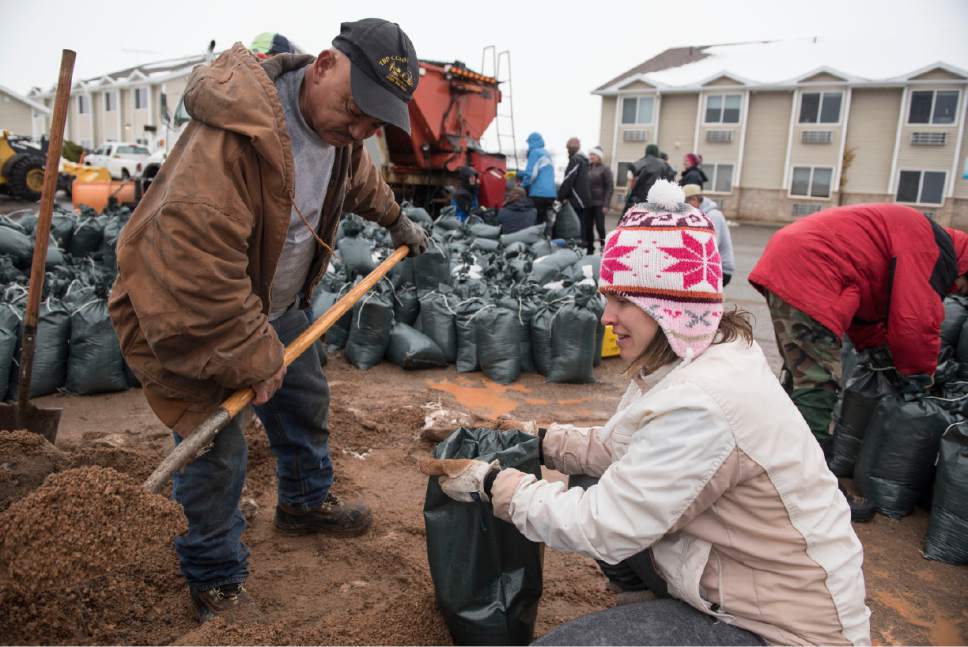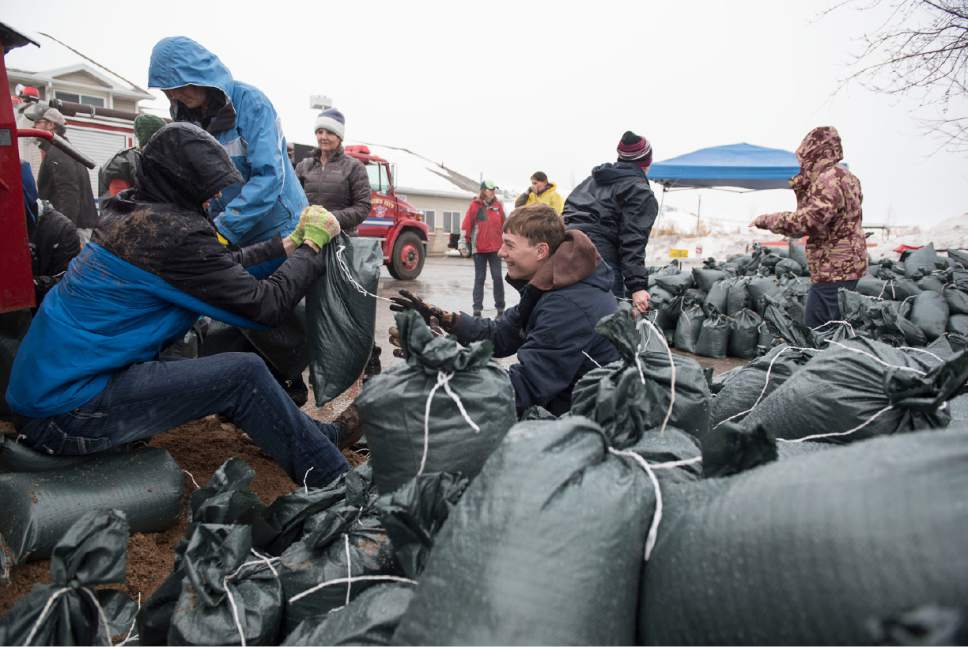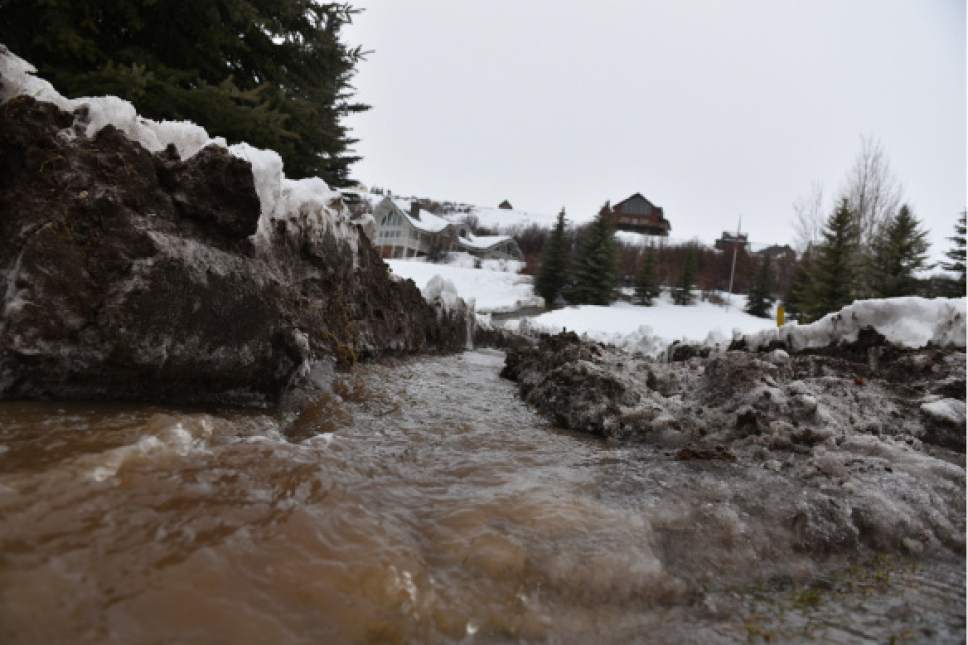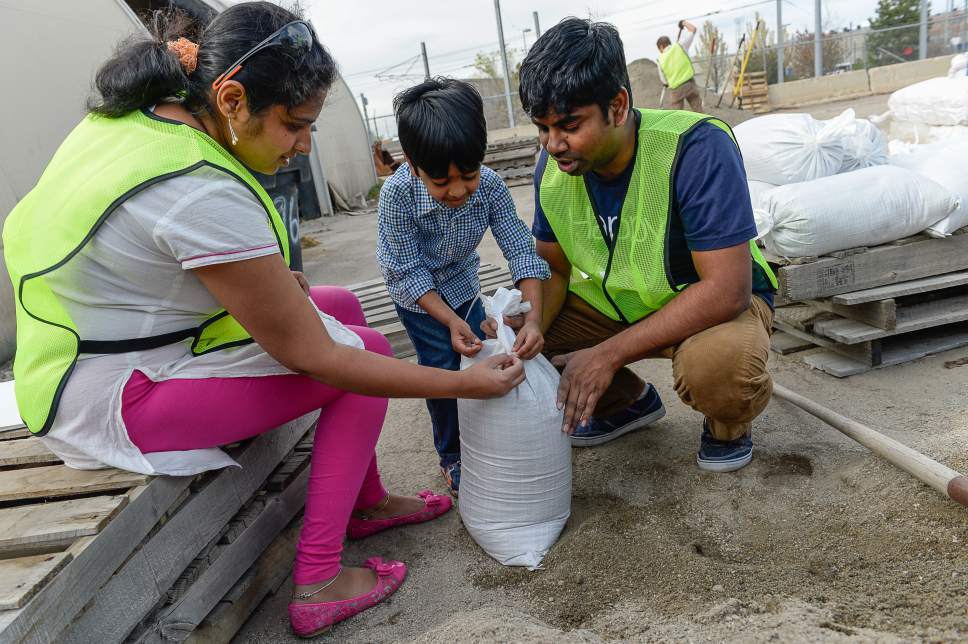This is an archived article that was published on sltrib.com in 2017, and information in the article may be outdated. It is provided only for personal research purposes and may not be reprinted.
Add this to the list of proverbs about the fickleness of Utah's weather: If there's not a drought, it's flooding.
That's the situation, especially in northern Utah, according to the latest report on water supplies. Drought, at least for now, appears to be a thing of the past — the U.S. Drought Monitor has not reported "abnormally dry" conditions in Utah for more than a week.
But piles of snow remain in many of Utah's mountain ranges, and experts are concerned about the potential for dangerous flood conditions, should all that snowmelt come down at once.
So for the first time in several years, forecasters are actually hoping for warm, dry weather.
"It's funny because you see people say all the time, 'We don't want it to warm up very fast,' " said Randy Julander, Utah Snow Survey supervisor for the U.S. Natural Resources Conservation Service. "Wrong. You don't want to postpone snowmelt and then have it melt really fast."
His rationale, Julander said, goes like this: It's Utah and sooner or later, hot, dry weather will return. And if there is still this much snow in the mountains when that happens, flooding is practically guaranteed.
March was helpful in this respect, he said.
Two weeks of unseasonably warm weather helped to melt off a significant portion of the snow at lower elevations. But higher areas are still packed, so Julander said the coming weeks will be critical in determining whether Utah's rivers remain within their banks this summer.
If April stays cold and rainy and warm summer weather doesn't hit until May or June, he said, "that chute is going to open and the bull is going to be coming out bucking."
Unfortunately, it doesn't look as though the weather will cooperate, said Brian McInerney, a hydrologist for the National Weather Service in Salt Lake City.
A rain storm forecast this weekend has already prompted the U.S. National Weather Service to issue a flood watch, and the service's Climate Prediction Center anticipates above-normal precipitation in northern Utah for the next 8-14 days.
"We still have some room to wiggle out of this," McInerney said, "but my feeling is that we are going to see some pretty big flows — bigger than anything since 2011."
McInerney said residents of Box Elder, Cache and Weber counties in particular should prepare for flood conditions. Those with basement sump pumps should ensure they are in working order, he said, and homeowners who live near streams should consider removing debris to ensure water doesn't back up behind a bottleneck.
He said residents should also use caution and keep children away from streams during the snow melt season.
"It's going to be really dangerous this year," he said. "Every time we have a big flow like this, we have a lot of people die on the river … it' so cold that you reach hypothermia in about two minutes, and the force of the water in most mountain streams is such that it's really hard to get oriented."
But these clouds do have a silver lining, Julander said. For the first time in several years, most of Utah's lakes and reservoirs are expected to fill this summer.
"By golly, the Great Salt Lake might even get a drop or two," Julander said.
According to the U.S. Geological Survey, the elevation of the south arm of the Great Salt Lake has already jumped more than two feet since Feb. 1.
Cory Angeroth, chief hydrologist for the U. S. Geological Survey's Utah Water Science Center, said there is currently so much water flowing into the south arm of the lake, it's outstripping the flow of water through the lake's railroad causeway. The barrier was breached last December in order to allow water to flow into the north arm of the lake.
Water levels in the Great Salt Lake's two halves were nearly equal in early February, he said, but the difference between the two is actually growing once again as spring runoff builds up on the south end.
The last time Utah had a big water year like this, Angeroth said, the Great Salt Lake rose five feet in a single summer.
epenrod@sltrib.com Twitter: @EmaPen











